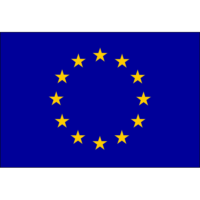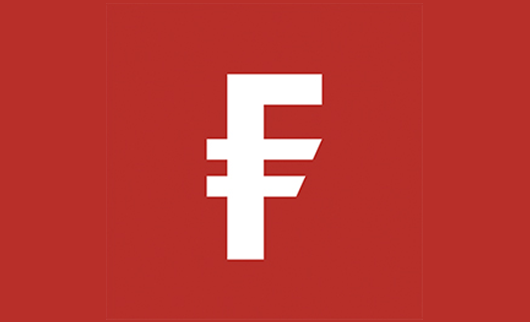A subtle shift rippled through equity markets in the heart of Europe as investors paused to assess forthcoming signals from across the Atlantic, hinting at a delicate interplay between central bank commentary and looming trade decisions. With markets settling into mid-week trading, a blend of cautious optimism and strategic repositioning set the tone, inviting professional investors to scrutinise not just headline moves but the story unfolding beneath.
Equities across the region edged modestly higher, yet the nuance of each index’s trajectory spoke volumes about investor intent. The broad-based STOXX Europe 600 gained around 0.3 per cent, reflecting selective appetite rather than a wholesale rally. London’s FTSE 100 eked out a 0.2 per cent advance, aided by stabilising energy and basic materials shares, while Germany’s DAX outperformed with a near-0.4 per cent rise, buoyed by the optimism among industrial and export-oriented names. Beneath these headline figures, technology stocks lagged slightly as investors weighed geopolitical frictions and global growth prospects, whereas miners posted the strongest sectoral improvement, signalling a cautious bet on commodities amid expectations of sustained industrial demand.
Fixed income markets echoed the sense of tentative conviction. Yields on German 10-year bunds ticked up by a few basis points, reflecting the modest uptick in risk sentiment, while peripheral spreads over bunds remained relatively flat, suggesting that the region’s more indebted economies are not yet commanding additional risk premiums. In the UK, gilt yields rose in tandem with a slight pullback in the pound, the currency dipping against both the dollar and the euro as traders positioned for the Bank of England’s forthcoming policy decision. Exchange rates took on particular significance this Wednesday, as currency moves will influence corporate earnings outlooks ahead of the earnings season, reinforcing the notion that every subtle tick in market data can reverberate through investor portfolios.
Behind these developments lie the highly anticipated minutes from the US Federal Reserve’s June meeting. Investors are parsing every nuance for clues on the Fed’s tolerance for higher inflation and the potential pace of any future rate adjustments. The residual question of how rapidly the Fed might unwind its policy support continues to underpin global asset allocation decisions, not least because the US central bank’s guidance often soaks through into European bond markets and shapes equity valuations via the discount rate applied to future cash flows.
Compounding the intrigue is the prospect of fresh US-China tariff moves. Reports have surfaced suggesting both sides remain at loggerheads, yet an abrupt escalation has so far been avoided. For many equity managers, this equilibrium represents both a headwind and an opportunity: while full-scale tariff hikes would ratchet up uncertainty, a stalemate or gradual de-escalation could grant a reprieve to sectors sensitive to global supply chains. Indeed, autos and technology component suppliers stand to benefit from any thaw in trade tensions, which would restore a measure of predictability to manufacturing schedules and procurement costs.
Meanwhile, the economic data calendar offered little distraction. German factory orders for May indicated a stabilisation after several weak months, aligning with broader signs that Europe’s manufacturing heartland may be finding a floor. Although the rebound remains fragile, the fact that orders did not slide further invited a cautious uplift in industrial equities. Similarly, euro area consumer confidence figures showed modest improvement, hinting that households may be starting to absorb recent inflationary pressures better than feared. Taken together, these data points lent credence to the narrative that Europe’s economy is neither charging ahead nor sliding back, but rather treading water as investors await clearer directional cues.
As trading volumes in equities remained moderate, the emphasis centred squarely on selective repositioning rather than indiscriminate buying. Portfolio managers reviewed their sector tilts with an eye on forward earnings revisions, mindful that any shift in Fed rhetoric or trade policy could trigger rapid revaluations. Meanwhile, commodities traders monitored copper and oil for signs that the industrial outlook is firming, while fixed income strategists weighed the balance between central bank hawkishness and potential growth headwinds.
In this delicate environment, the market’s ability to sustain incremental gains will hinge upon the clarity of US monetary and trade policy announcements. Should the Fed’s minutes convey a willingness to tolerate above-target inflation, European bond yields may rise further, placing pressure on high-yielding equity sectors. Conversely, any hint of dovish flexibility could reinvigorate long-duration assets, offering a second wind to technology and growth-orientated shares. On the trade front, a further de-escalation in US-China tensions would bolster markets with exposure to global manufacturing, while renewed threats of tariffs would likely shift the pendulum back towards defensive assets.
Ultimately, this mid-week adjustment underscores the nuanced choreography of modern markets, where central bank communications, trade policy and economic data converge to guide portfolio decisions. Investors now stand at a crossroads, ready to pivot at the first sign of decisive signals from Washington or Beijing, highlighting that in today’s interconnected landscape, regional equities can rise or fall not merely on local developments but on the subtleties of global policy interplay.
Fidelity European Trust PLC (LON:FEV) aims to be the cornerstone long-term investment of choice for those seeking European exposure across market cycles.











































